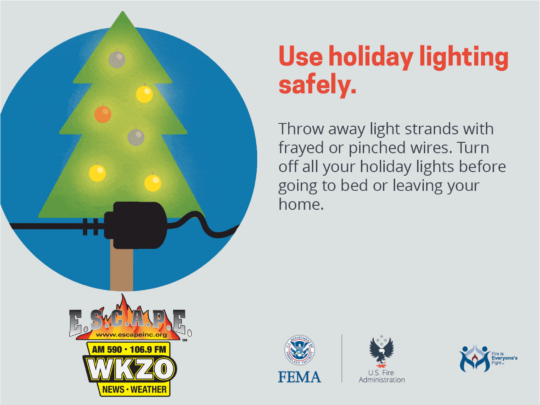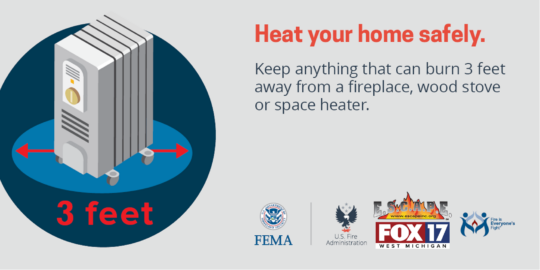When a home catches fire, families have less than two minutes to get out safely, that’s why FOX 17 partnered with E.S.C.A.P.E. Inc. to help get more smoke alarms into homes across West Michigan. To date, the Keep Michigan Safe initiative has provided more than 1,000 smoke alarms to viewers, and their local fire departments have helped install them correctly. The Red Cross has also been instrumental in helping protect people with smoke and carbon monoxide alarms.
Fires increase dramatically in the winter months, and the holiday season provides its own unique dangers. Don’t burn real candles, use the battery-powered versions to eliminate risk. Make sure to unplug/turn off holiday light displays when you leave the house and overnight. Don’t put gifts or decorations in the way of exits and escape routes. Close bedroom doors at bedtime to help prevent fires from spreading.
For more information on fire prevention tips, or to reach out about getting a smoke alarm installed, head to escapeinc.org, fox17online.com/safe or call toll free (844) 978-4400.
Here are links to holiday fire safety tips stories which aired live on Fox 17 and WKZO AM 590 and FM 106.9.
- 12/18/2024 – 9:20 a.m. – Fox 17 Morning News – https://www.fox17online.com/safe/escape-partnership-marks-1-year
- 12/19/2024 – 10:15 a.m. – Fox 17 Morning Mix – https://www.fox17online.com/morning-mix/e-s-c-a-p-e-inc-and-fox-17-celebrate-one-year-of-installing-smoke-detectors-across-west-michigan
- 12/20/2024 – 8:15 a.m. – WKZO AM 590 and FM 106.9 – https://omny.fm/shows/kalamazoo-mornings-with-ken-lanphear/be-fire-safe-this-holiday-season













